 | ||
The Jungle, officially the East Duwamish Greenbelt, is a greenbelt on the western slope of Beacon Hill in Seattle that is known for its homeless encampments and crime. The Jungle consists of more than 160 acres (65 ha) underneath and along an elevated section of Interstate 5 between South Dearborn Street and Lucile Street; a January 2016 assessment counted 201 tents and estimated more than 400 homeless people lived in the encampment prior to a shooting on January 26, 2016.
Contents
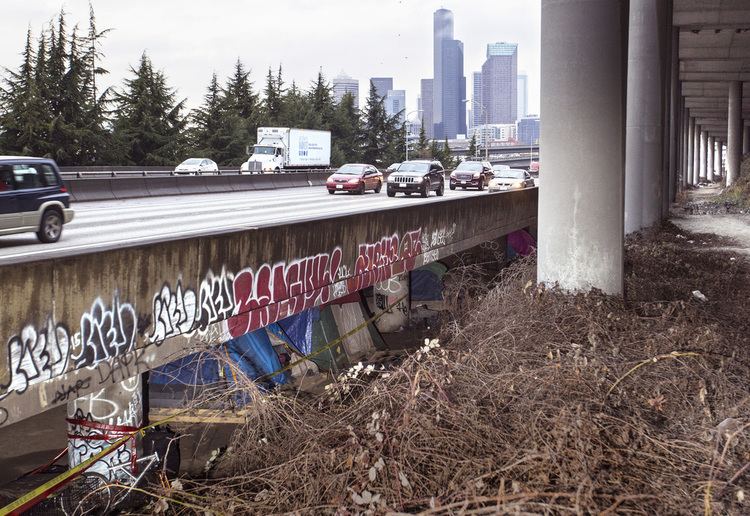
Location and ecology
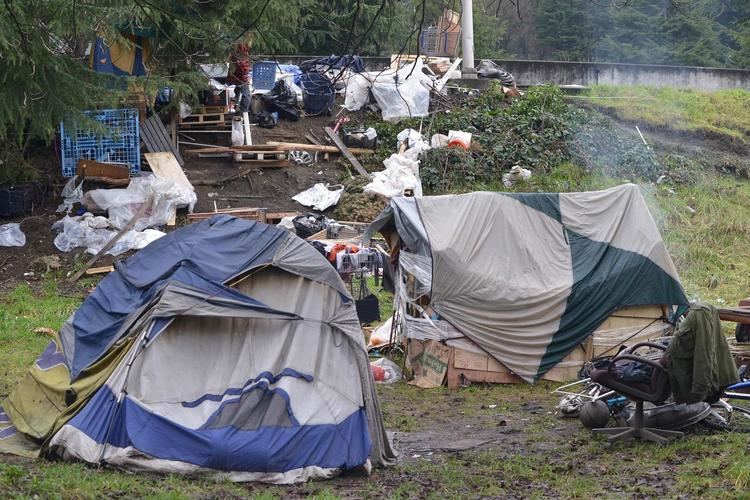
The Jungle grows on the steep western slope of Beacon Hill near the south-end of Downtown Seattle. Being bound by Interstate 5 to the west and Interstate 90 to the north, the land is primarily managed by the city and state departments of transportation. The thin tract of land is about 100 acres (40 ha) and extends south to the Georgetown neighborhood. The wooded area can be entered through Rizal Park, highway maintenance roads, or residential areas on Beacon Hill.
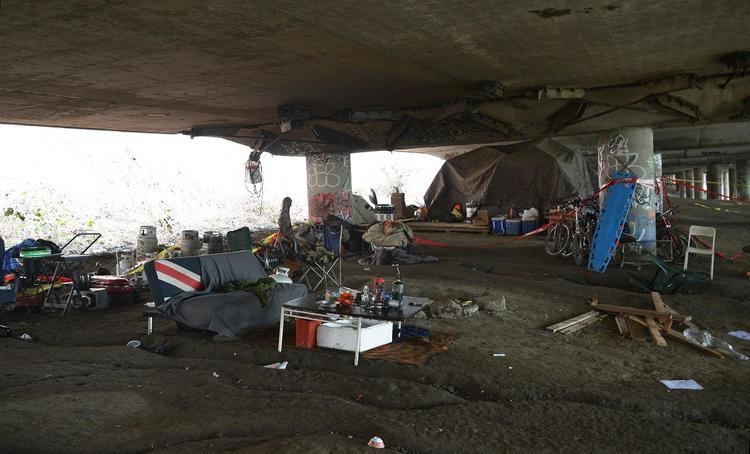
Thick blackberry brambles and vines grow among maple and other trees in the urban forest. Various rodents—including rats—and numerous species of birds are common.
The Jungle is featured on OpenStreetMap and surrounds part of the Mountain to Sound bike corridor.
History
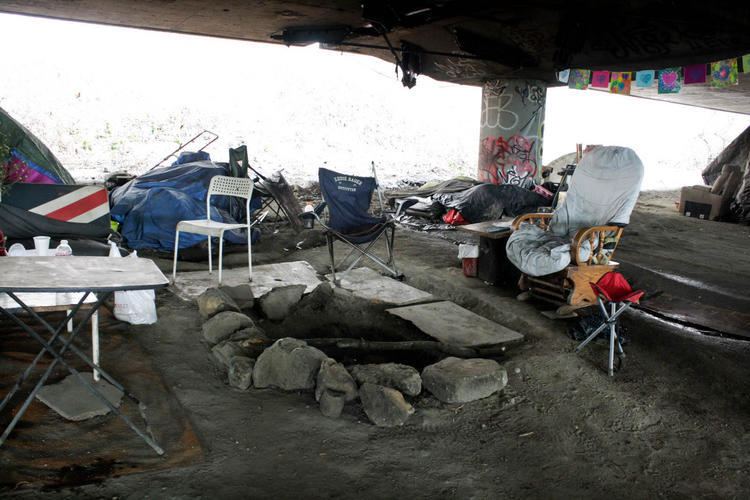
Homeless people may have used the area as early as the 1930s. It gained notoriety in the 1990s when the city began razing the encampments. In 1994, about 50 campsites yielded 120 tons of trash. Seattle's organized tent cities for the homeless are offshoots of illegal communities that formed after squatters were forcibly removed from The Jungle. Periodic bulldozing since the '90s by the city or state department of transportation has led the homeless to complain that the city provides little to no warning before enacting cleanups.
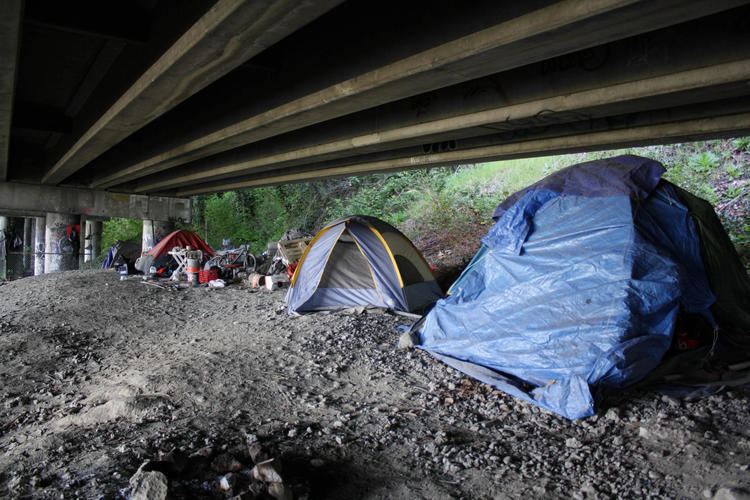
The Jungle increasingly became a haven for criminals in the 2000s. Criminal activity has included assaults, rapes, prostitution, and murders. Residences in the Beacon Hill neighborhood have been burglarized by those staying in The Jungle. Gang members basing drug trade in the woods also became a concern. The Jungle is considered by many unsafe at any hour, though others have argued that its danger is exaggerated by officials and media. Weapons, used drug paraphernalia, potentially stolen goods, and human feces are often seen during the city and state sweeps.
There have been many deaths in and around the greenbelt. Between September 1997 and February 1998, the bodies of three women murdered by a serial killer were found in the area. There have been numerous lower-profile murders. Transients have been killed attempting to cross the nearby freeways. A homeless man was inadvertently killed in June 2007 as workers were mowing a blackberry thicket he was sleeping in.
The city announced plans to revitalize the greenbelt with an extension of the Mountain to Sound bike corridor through the Jungle that opened in the fall of 2011. The trail features a paved path, lighting, and fences.
2016 shooting and closure
On November 2, 2015, Mayor Ed Murray declared a civil state of emergency over Seattle's growing homelessness crisis. That declaration was followed with calls for greater state and federal funding, moderate increases in city funding for homeless services, and clearances or "sweeps" of unauthorized homeless encampments that homeless advocates and some city council members have publicly decried. On January 26, 2016, two people were killed and three were injured during a shooting at the Jungle encampment. The shooting led to calls from Mayor Ed Murray and other local officials to close the encampment per state trespassing laws, though homeless advocates have said that the city should stop closing unauthorized encampments until it has an alternative location or shelter for campers.
In February, 2016, the Washington State Legislature proposed $1 million to install a 8,000-foot-long (2,400 m), 6-foot-high (1.8 m) razor wire and barbed-wire fence to encircle the 100-acre (40 ha) area.
From 2011 to 2016, the area was the site of at least 750 incidents responded to by the Seattle Fire Department, of which 500 times were emergency medical situations.
On May 17, 2016, the city of Seattle and the Washington State Department of Transportation (WSDOT) announced plans to permanently clear out The Jungle, with the estimated 300 remaining people living there to be resettled by the Union Gospel Mission. WSDOT will also clear debris from the freeway's underside and improve road access, while the city will clear the hill above the site, at a total cost of $1 million.
A newer encampment formed under the Interstate 5 and Interstate 90 interchange to the northwest of the former Jungle encampment, and was dubbed "The New Jungle" or "The Triangle" by local media.
Demographics
A 2016 survey conducted by the city of Seattle and the United Gospel Mission determined that a total of 111 people remained in The Jungle after multiple attempts to close the encampment. Approximately 80 percent are male and 20 percent are female. 45 percent of residents were white, 45 percent were black, and 10 percent were another race.
